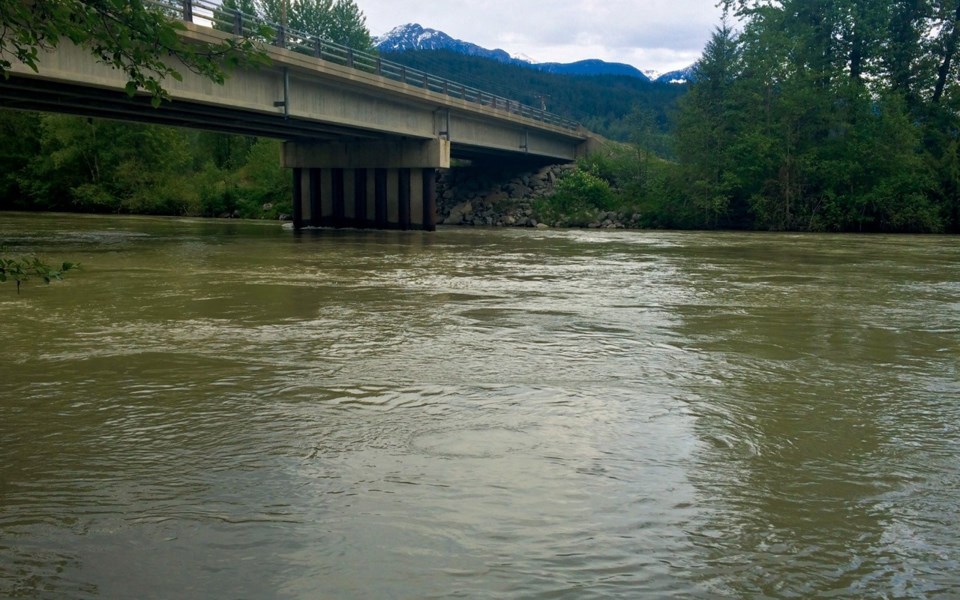The Pemberton Valley Dyking District (PVDD) has updated its sediment management plan to account for the impact of the 2010 Mount Meager landslide, with the new plan calling for a significant increase in sediment removal.
"Since that slide, we hadn't had good updated information (on the) full scope of the impact," said Steve Flynn, operations manager at the PVDD. "Now we do understand it ... now we can deal with it."
Prepared by Northwest Hydraulic Consultants Ltd, The Lillooet River Flood Mitigation Program: Preliminary Sediment Management Plan says that sediment removal in the order of 210,000 to 260,000 cubic metres a year may be necessary over the next several decades.
It draws heavily from the Lillooet River Floodplain Mapping Report, which was released in December 2018 and found that peak discharge flows related to specific flood events are higher than previously understood and infrastructure does not offer as much protection as was previously thought.
The Meager landslide took place 66 kilometres upstream of Pemberton and caused some channel blockage of Meager Creek and the Lillooet River, but no major flood.
"The material came down, and it ended up in the floodplain," explained Flynn. "Now, because it's in the floodplain, the water is grabbing it and moving it down (the river)."
While finer material has already made it down to the lower parts of the river, near the Pemberton area, the coarse material hasn't.
"The main slug of gravel hasn't even made it into the lower reach yet—it's still above the forestry bridge," said Flynn, noting that the PVDD removed 15,000 cubic metres of debris from the river this spring. Flynn added that the current situation will improve over time, as the material is removed and dispersed downstream.
The report states that the lower part of the river—which begins just past Miller Creek and runs past Pemberton—is considered the "highest priority area for profile maintenance," as a reduction of the river's hydraulic capacity could significantly add to the flood hazard for the Pemberton area.
The slide has greatly increased the amount of work the PVDD is responsible for, said Flynn. "There is always going to be gravel movement in the river system, (but) previous to the slide ... it was somewhat stable," he said. "But with the slide, and all the material that's in it ... it's just moving much faster."
The VOP and the SLRD have both applied for grants, in the amount of $150,000 each, that would be earmarked for future planning, with a response from the province expected soon. This planning would involve looking at all options to improve flooding infrastructure in the valley and prioritize all of the possible courses of action in coordination with the Village of Pemberton, Squamish-Lillooet Regional District, and the Lil'wat Nation, explained Flynn.
"There's significant environmental, engineering, planning costs to figure all that out," said Flynn, who estimates that the sediment removal could cost about $2 million a year to carry out.
"Right now we've got zero commitment from the province to help us out in any way shape or form," he said. "We are in the process of trying to get funding commitments out of them. But to date, we've gotten zero."
The amount of work "far exceeds" what local taxpayers can afford, added John Beks, who chairs the PVDD. The province and perhaps even the federal government will need to come to the table to make it happen, he added.
"We need government assistance, as the Meager slide had a big impact on our community," said Beks. "It was the largest debris slide in Canadian history, and it had a big impact on us."
According to a statement provided to Pique by the Ministry of Forests, Lands, Natural Resource Operations and Rural Development, the province is currently reviewing the available information "to support the development of options for effectively managing public safety in the Pemberton Valley. The province intends to meet with the PVDD, local governments and First Nations in the coming months to discuss approaches moving forward."




